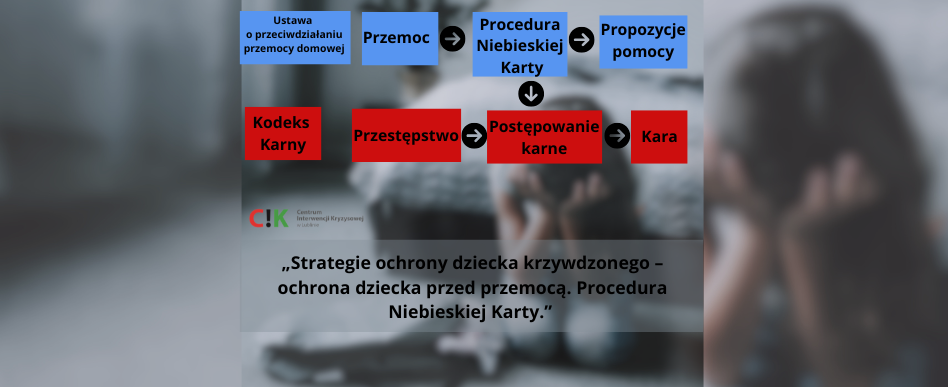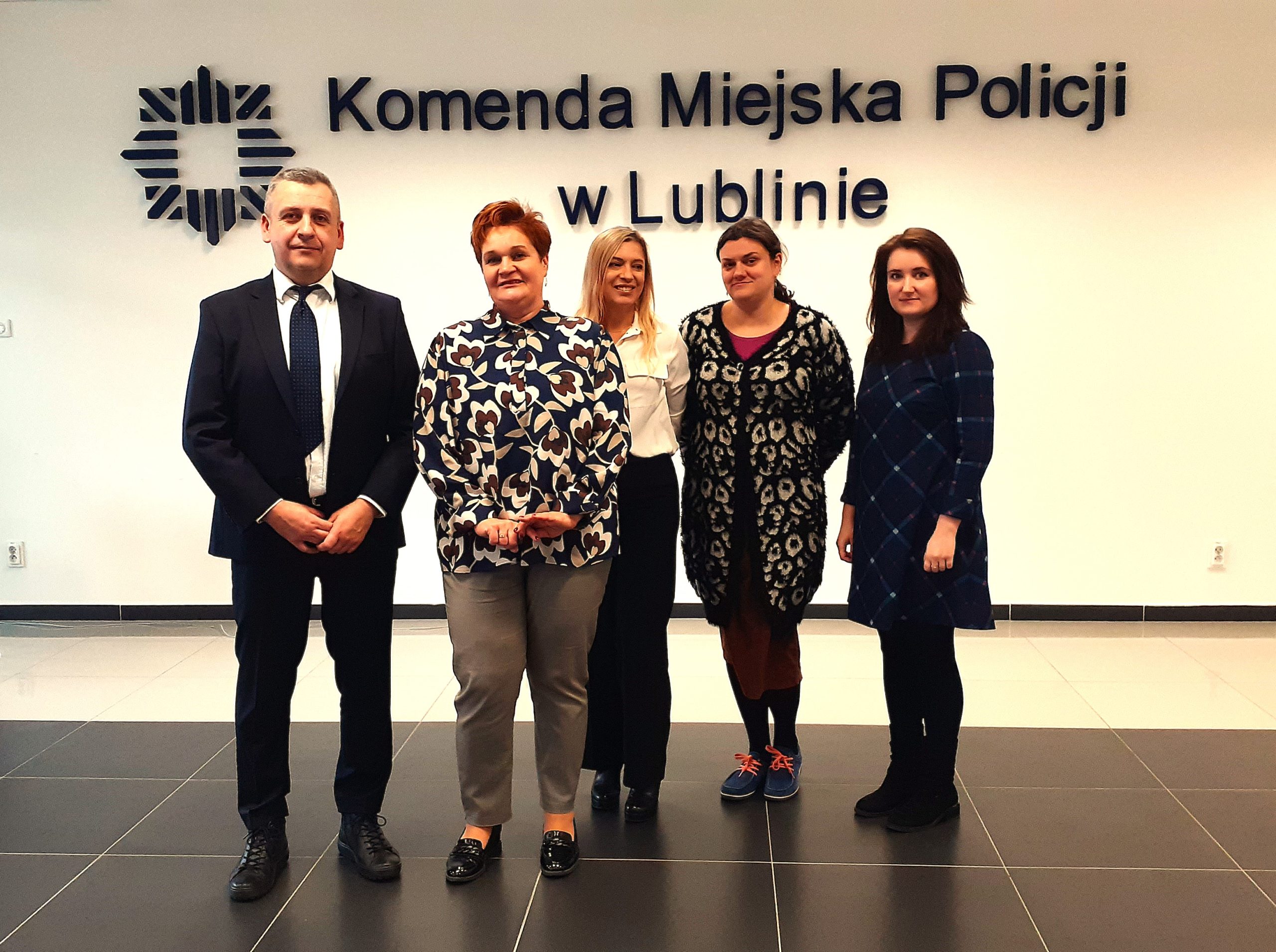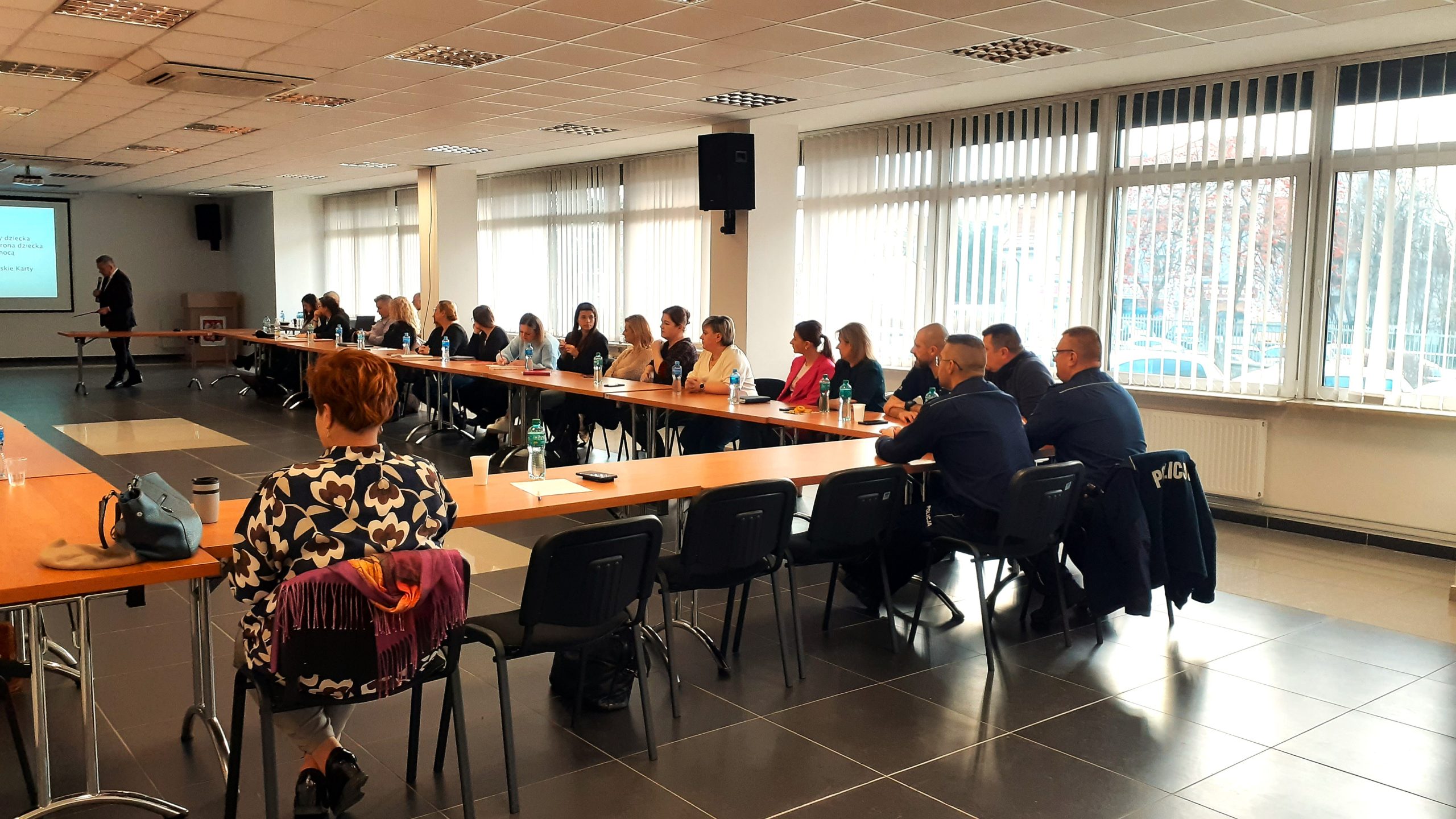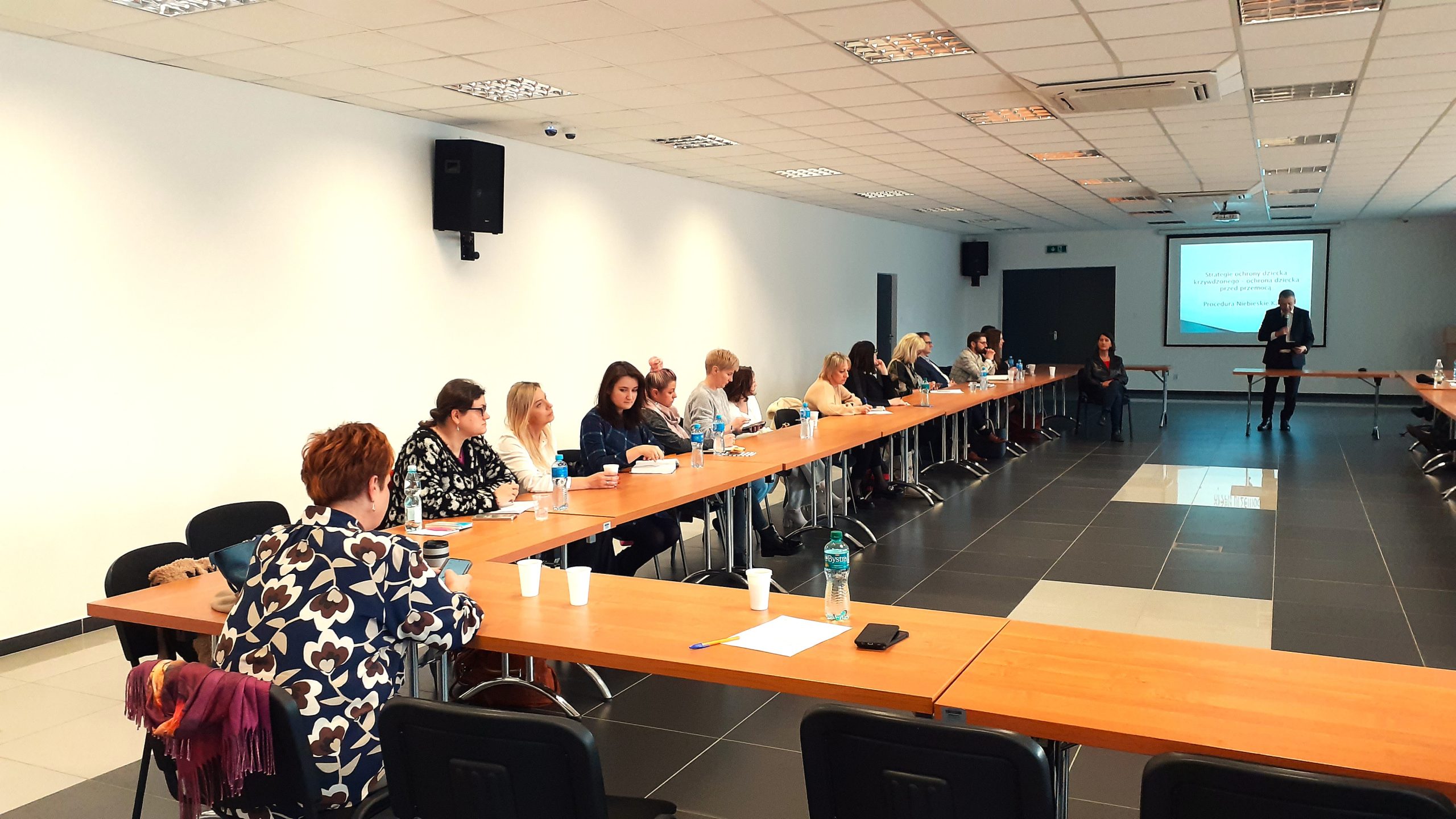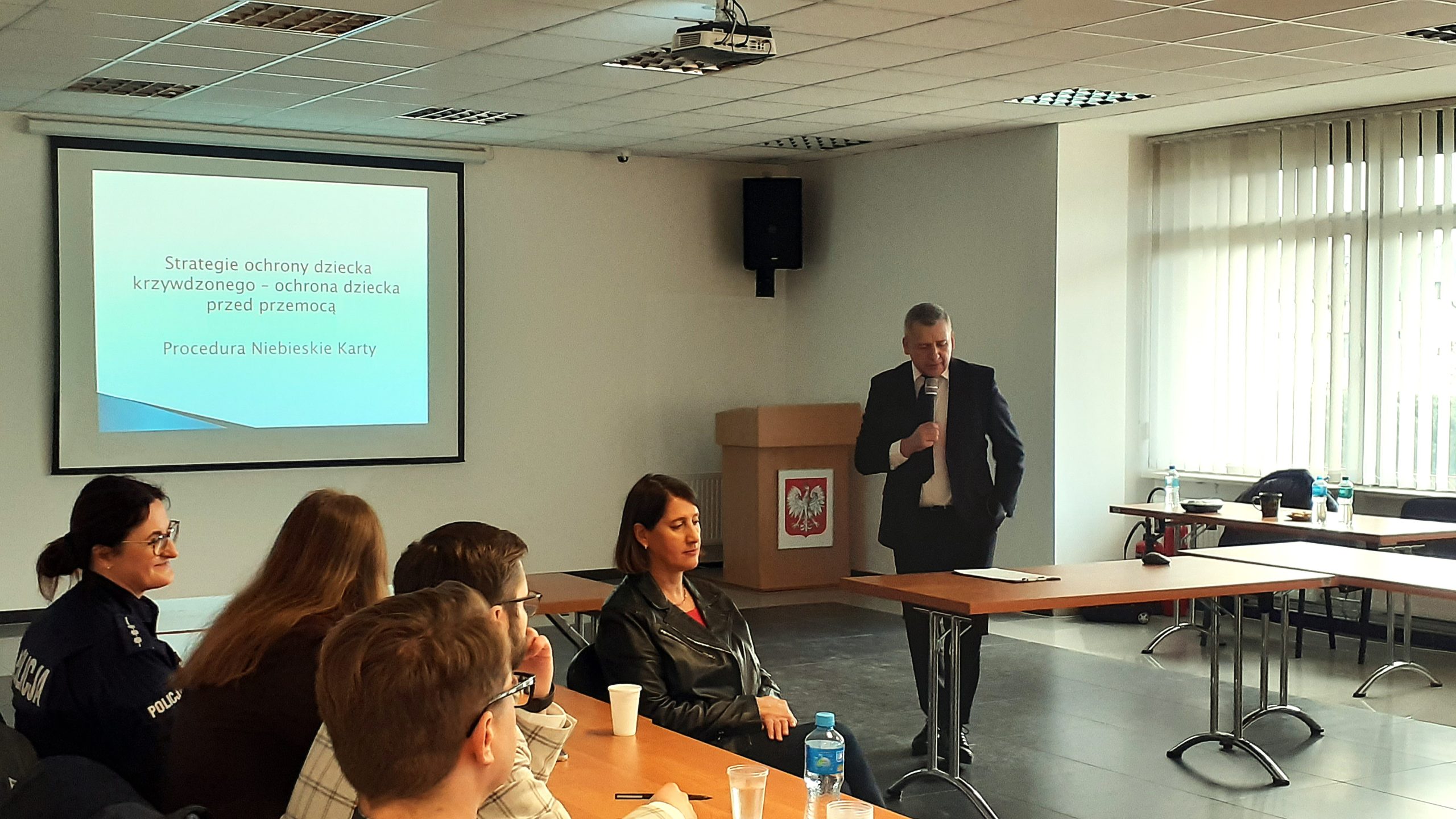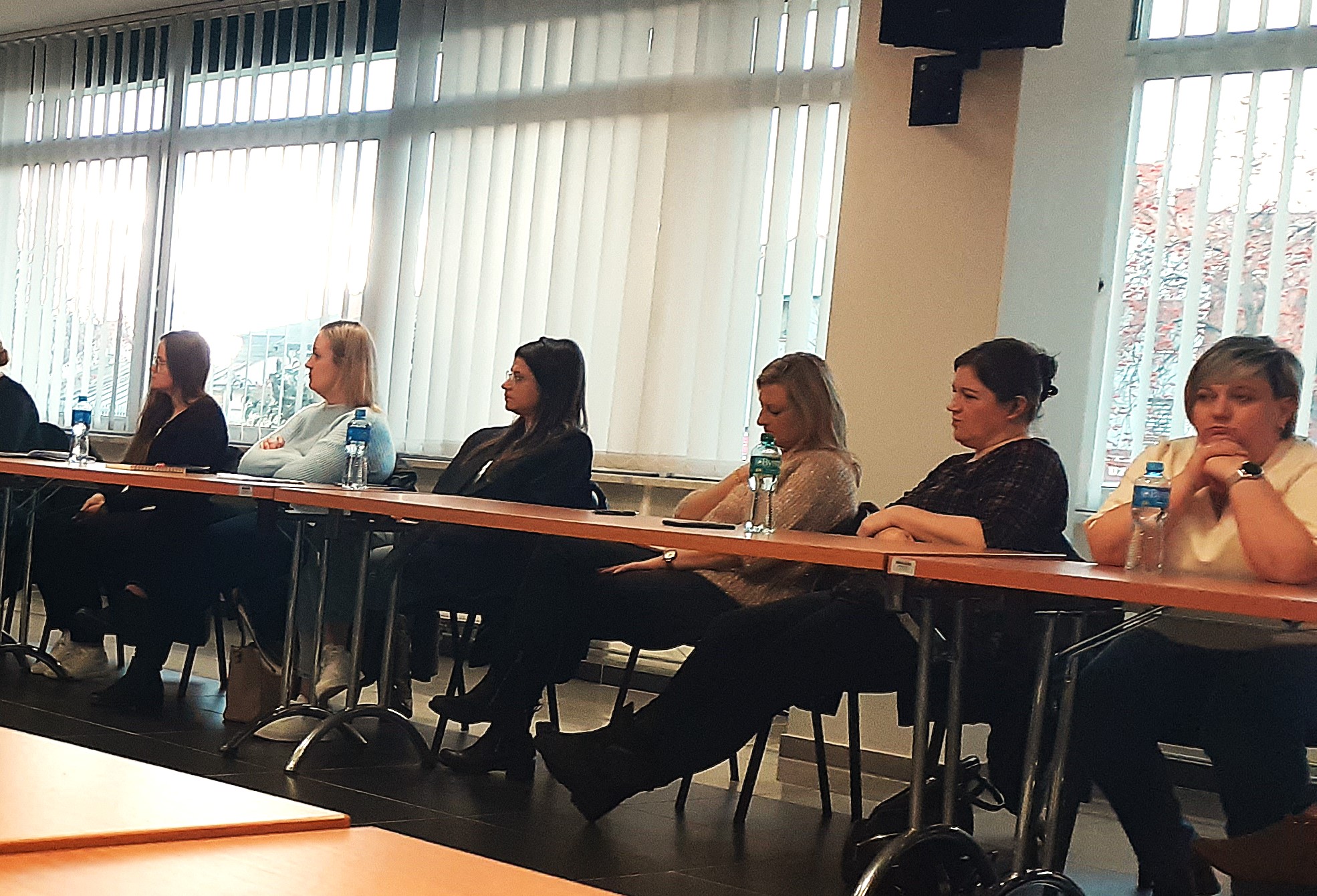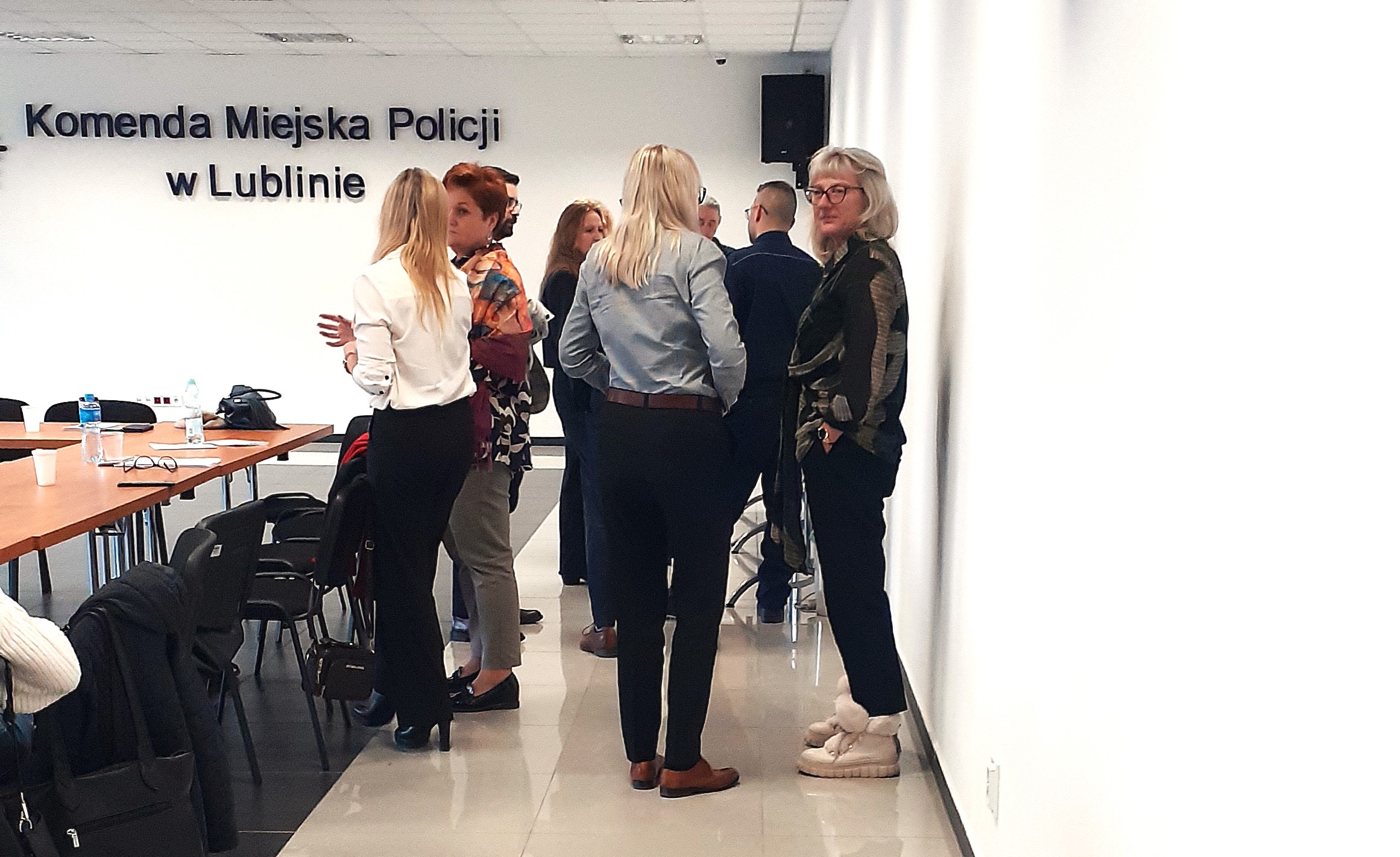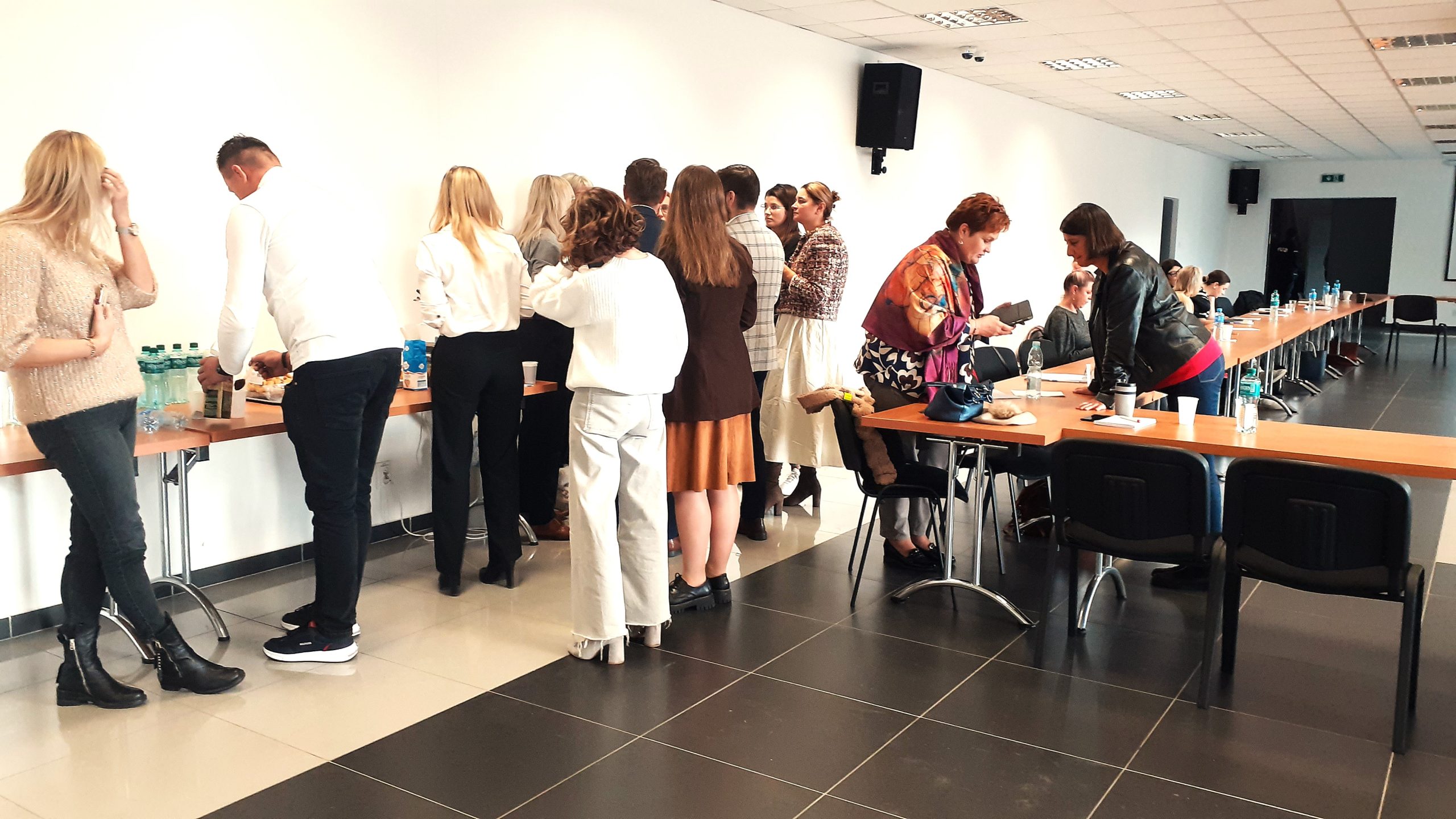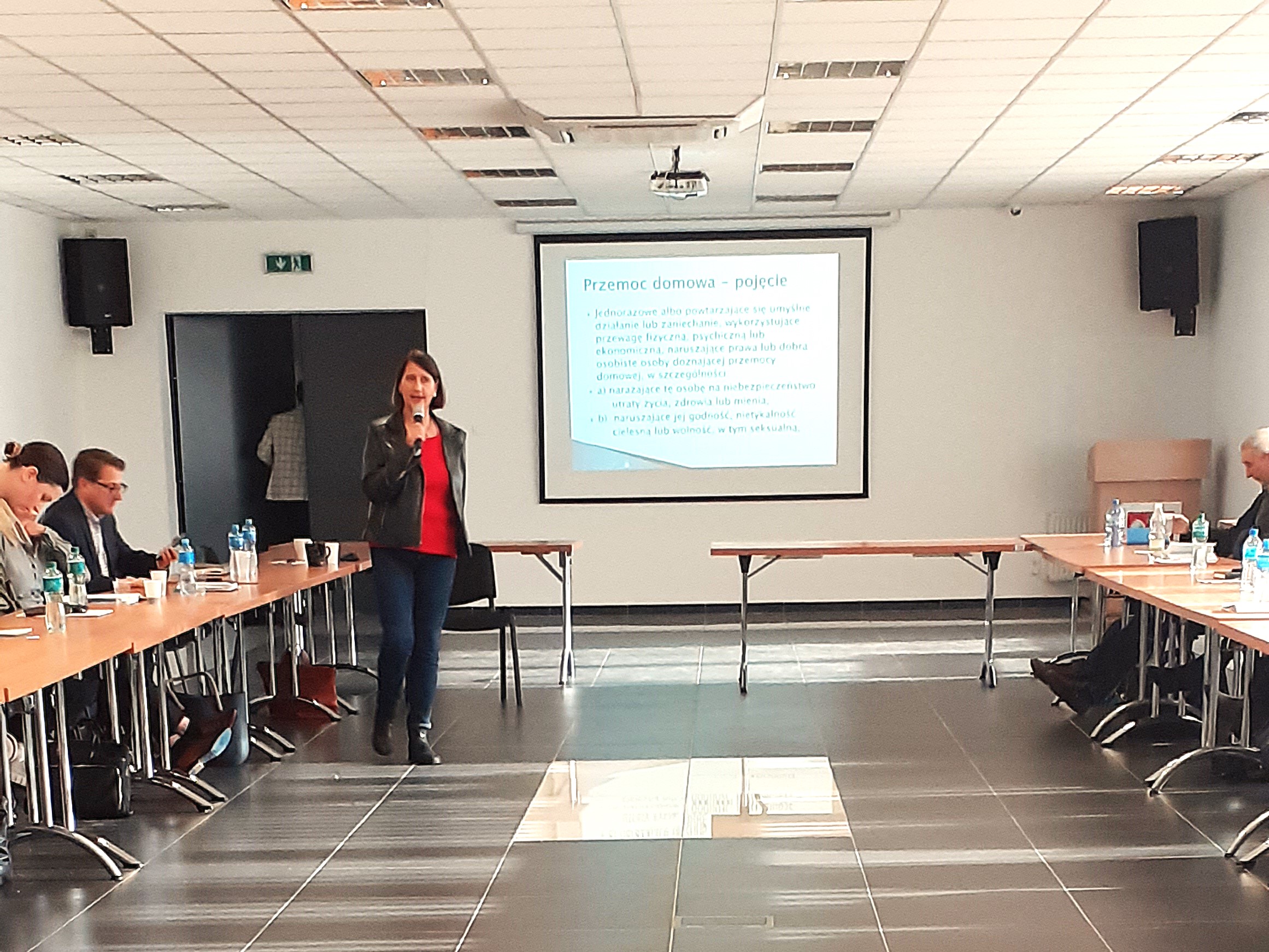On 21.11 a training course ‘Strategies to protect the abused child – protecting the child from violence. Blue Card procedure.’ conducted by Ms Liliana Krzywicka, who brought us up to date on the causes of violence, stereotypes about children, the differences between violence and aggression, drew our attention to the problem of intervention work being dominated by procedures as well as the necessity to standardise procedures related to the prevention of violence. During the training, we also had discussions on, among other things, legal acts, changes in these acts, and the interpretation of individual provisions. Participants received a lot of relevant information supported by practical examples in order to understand even better the issues related to countering violence against children.
The scale of violence against children is very large. According to the Dajemy Dzieciom Siłę Foundation – 2023. – 79% of children aged 11-17 have experienced violence at least once and 52% have experienced violence in the last year.
What is the origin of violence? There are many causes. Some of them are worth paying special attention to:
- easy blurring of the boundaries between victim and perpetrator – violence begets violence!
- stereotypes such as ‘children and fish have no voices’. So-called invalidation often becomes the beginning of violence against children.
Negating and taking away a child’s sense of agency can lead to serious problems later in life. A person who grows up feeling that they have no control over anything is likely to have to put in more effort as an adult to build a sense of self-worth and agency. ‘I’m not important and I can’t do anything’. – adults invalidated in childhood, often think in exactly this way.
So what can you do to ensure your child gets the best? How about not demanding too much, not restricting the child’s behaviour in any way? Nothing could be further from the truth. For the proper development of the child, factors such as:
- wise boundaries
- signposts
- wise, strong adults
The child needs to feel that someone is in control. This someone should be an adult – a parent, a guardian. It cannot be the child himself! A child – even a very wise and mature child – cannot take on the role of parent, of responsibility. It is not the child who should know what to do – it is the adult who should show the way (signposts), hold the steering wheel and mark out the area in which it is safe to move (wise boundaries) and no matter what – show the child that it can rely on it (strength, wisdom).
At the training, Ms Liliana cited an important thought – that perhaps the commonly accepted term ‘parental authority’ should be changed to ‘parental responsibility’. All the legislation still talks about the former. Many people when hearing ‘authority’ instinctively fight for it. In an unconscious way, this word can influence what we strive for, what we want and how we go about getting it. ‘Responsibility’ has a completely different tone – it shows what PREVENTING a child involves.
Violence has been reported, procedures have been implemented, intervention help has started to be given. Does this mean a happy ending? Not quite. It is certainly a step towards improving the situation, but one must not forget that the moment violence is disclosed is always a crisis situation!
Remember to use descriptive language when talking about violence in situations such as reporting it to the relevant institutions. ‘He uses physical violence’ or ’he beats me’ – is far too little, too general. It can be difficult, but it is very important to describe such events as precisely as possible. At the same time, let us also remember that not all violence is criminal, although all violence causes harm.
How do we recognise violence?
We are probably all familiar with the expression that someone has ‘got on their nerves’. This is when someone, for example, raises their voice as an expression of emotion and as an impulsive reaction without any intention of causing harm. We call such a situation aggression. Aggression can, of course, have negative effects, aggressive behaviour has an impact on the environment, but if such behaviour was not intentional – it is not violent.
Differences between aggression and violence
Violence:
- concerns only people,
- intentional,
- taking advantage of a situation of dependence and power advantage,
- taking away power, strength, sense of influence,
- disposing of someone,
- objectifying a person,
- physical, psychological, sexual, neglect, economic,
- emotional abuse – a parent meets their emotional needs with a child,
- Violence that does not enter the field of intervention: e.g. arranging the child according to one’s vision and not allowing the child to decide on things, taking away the child’s agency, etc.
Aggression:
- non-intentional,
- concerns the human and animal world,
- has a biological basis,
- is a response to a threat (sometimes impulsively shouting at someone is aggression, not violence – not to be confused with insanity or lack of it),
- an emotional response that does not cause harm and does not exploit the advantage of force.
The topic of the above differences is very broad and many situations can be interpreted in different ways, which is why there was a discussion on this topic during the training.
There was one thing that none of the participants had any doubt about – a ‘spanking’ is unquestionably VIOLENCE! It seems unbelievable that in today’s world, with such widespread access to knowledge about, among other things, the destructive effects of violence on a child, there would be people who consider hitting another human being as a method of education.
If you consider a ‘spanking’ to be a parenting method, ask yourself – why do you feel bad after hitting your child? Why do you feel this discomfort? Why do you feel remorseful, sorry and sometimes even cry? Why do you apologise to your child later, or try to do something nice for him/her to ‘make it up to him/her’?
A spanking is NOT a parenting method. A spanking is violence against a child that does great harm to the child. Maintaining an atmosphere of fear is not conducive to anything developmental, because fear prevents thinking.
At the training, Ms Liliana touched on three phenomena that have an extremely negative impact on a child’s psyche, i.e. comparing, invalidating and shaming, while pointing out that violence can express itself through both action and inaction. It is important to remember that violating a child’s privacy also has the hallmarks of violence!
Where does parental control end and invasion of privacy begin?
When our child is using the Internet and we have a suspicion that he or she has come across content that is dangerous for him or her – it is our duty as a parent to check such a situation by first talking to the child, e.g. ‘I will talk to you about what you are doing on the Internet to protect your safety, and if we cannot communicate, I will look and check what you are doing’. Such a situation is very different from, for example, reading a child’s diary – which is clearly an invasion of their privacy. Each situation involving interference with a child’s privacy must be considered individually.
What rights does the school have?
It is not true that a child experiencing violence ‘is not a matter for the school, but for the family’ because ‘the school can do nothing’.
In any action that prevents the application of child protection standards – the school has a duty to intervene. A parent cannot prohibit the school from responding when a child is being harmed. The school not only can, but actually has a duty to take action when violence is used against a child!
What about professional confidentiality? Child abuse is sometimes a taboo subject, but it is not covered by professional secrecy and anyone who becomes aware of it – e.g. a teacher, psychologist or educationalist – has a duty to react. Such a situation always requires an explanation and intervention.
Legal aspect
The Law on the Prevention of Domestic Violence has undergone a number of changes, including – Article 12a now speaks of taking action in relation to a threat to the life or health of a child – rather than an ‘immediate threat’ – as it previously read.
It is now possible for the police to issue an order to the perpetrator of the violence to immediately leave the jointly occupied dwelling and its immediate surroundings or a restraining order – if there is a threat to life or health.
Remember:
- children who witness violence – become sufferers of violence. This can be even more severe than experiencing it personally,
- relational trauma is the most serious of all – it destroys the basis of mental health,
- children in crisis do not need therapy. They need interventions first – support and safety to survive (key elements of mental health – safety, agency, order in the world – justice);
- key to working with children: relationships, predictability, conversation, children have a need for orientation, understanding, soothing emotions (information, education, support).
